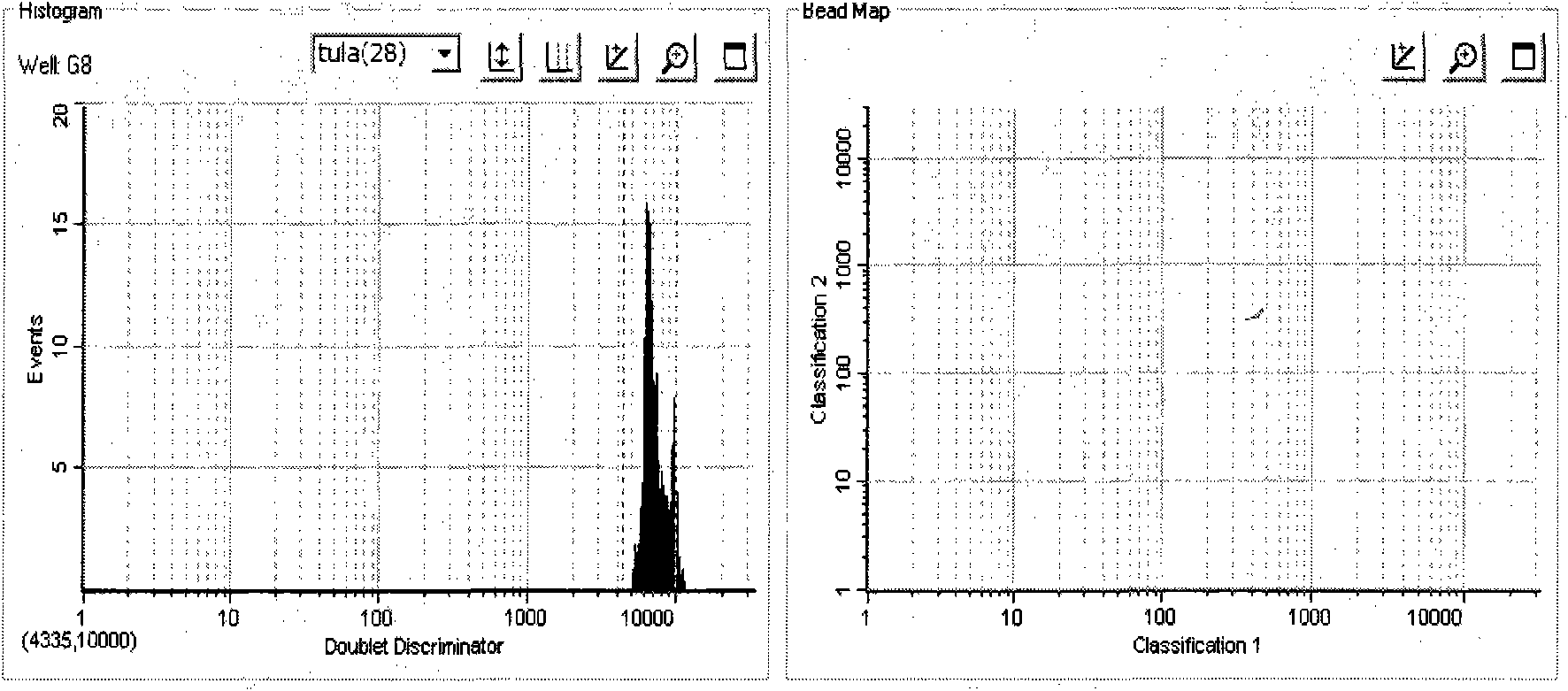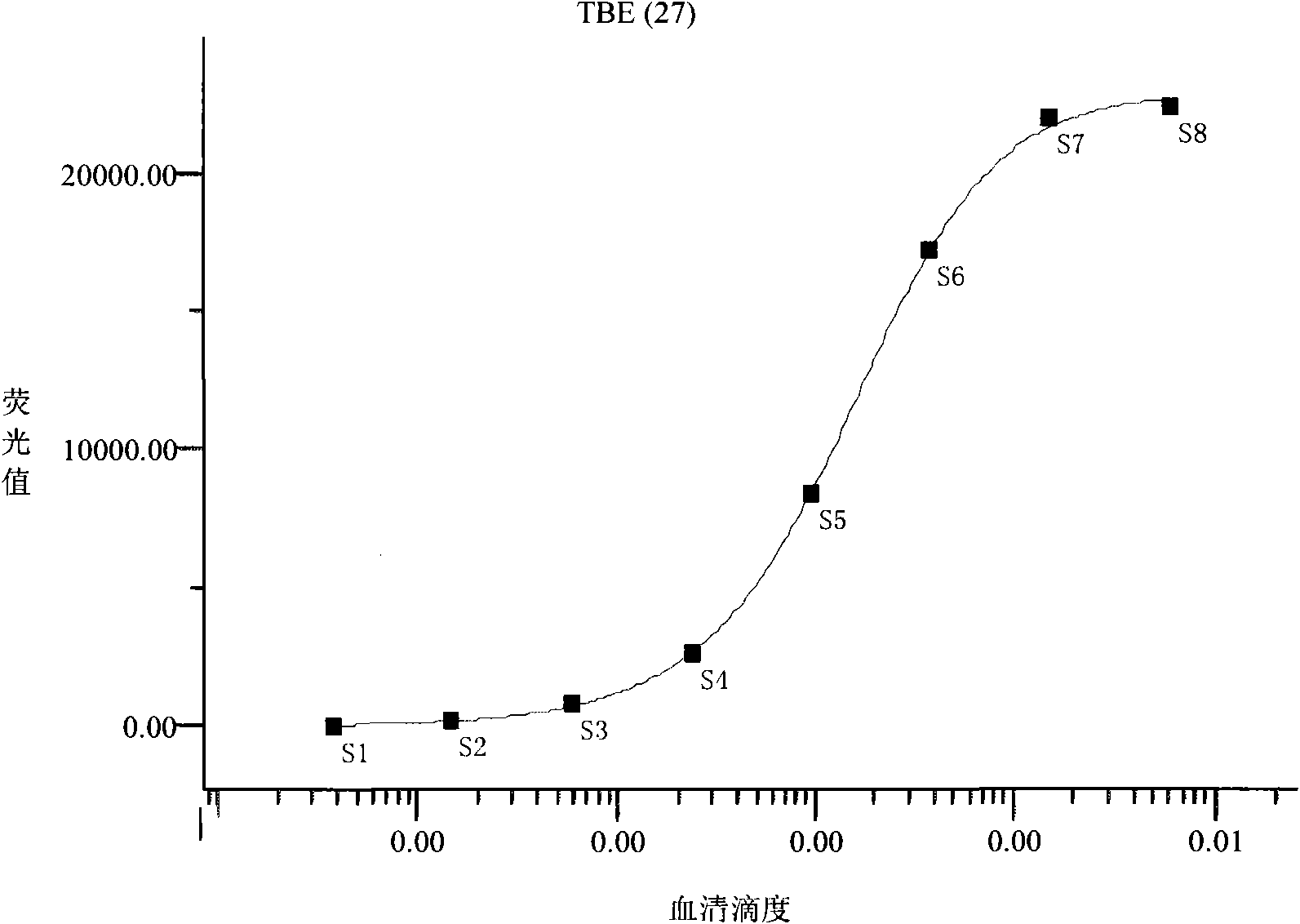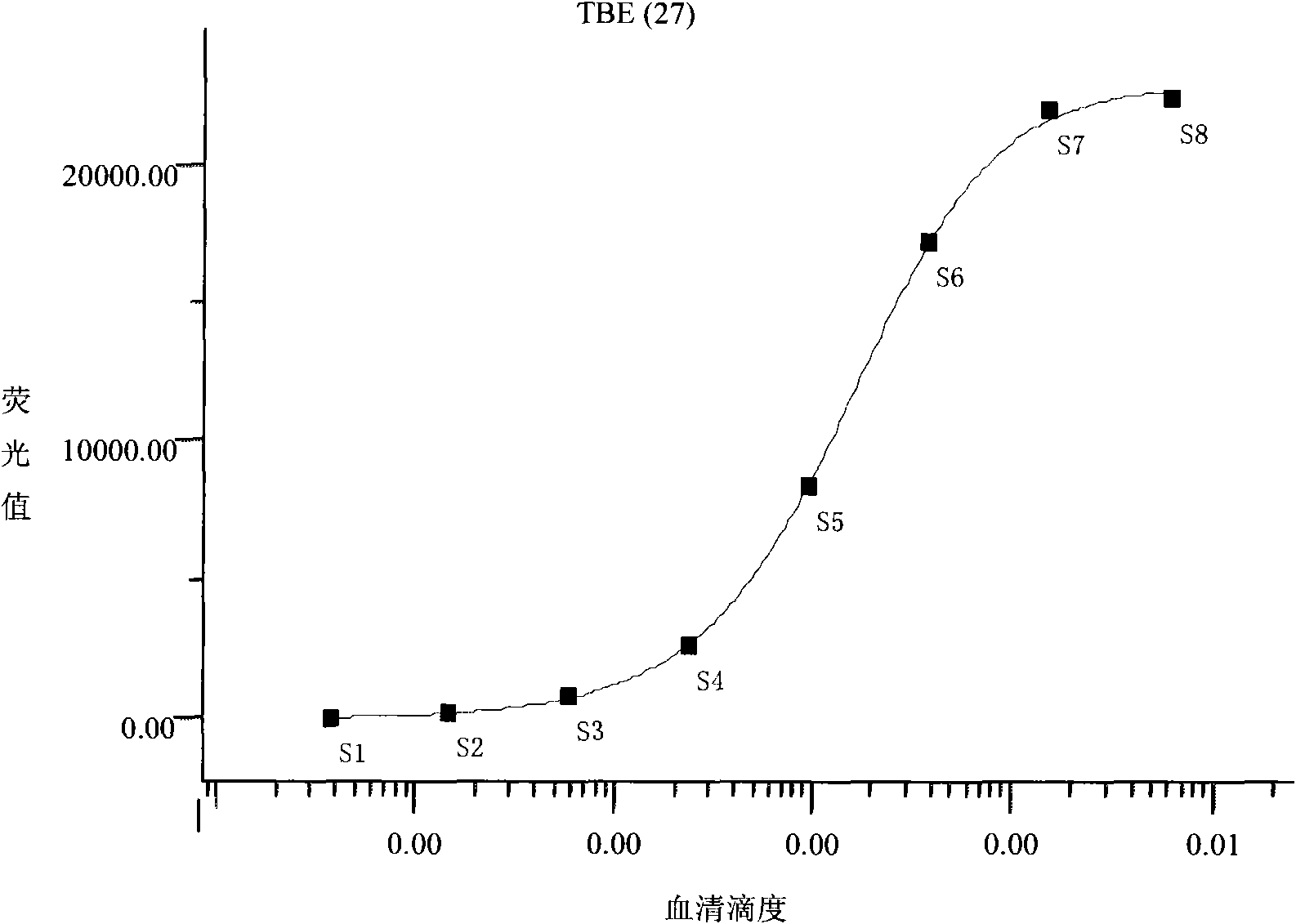Preparation method and using method of protein suspension chip for detecting tick borne encephalitis antibody in serum sample
A tick-borne encephalitis and suspension chip technology, which is applied to the preparation and use of protein suspension chips for detecting tick-borne encephalitis antibodies in serum samples, can solve the problems of lack of models and evaluations, and achieve good detection results
- Summary
- Abstract
- Description
- Claims
- Application Information
AI Technical Summary
Problems solved by technology
Method used
Image
Examples
preparation example Construction
[0041] 2. Preparation of samples to be tested
[0042] 1. Preparation of target analyte samples
[0043] The target analyte is rabbit anti-tick-borne encephalitis IgG, and the interfering sample or the sample used as method-specific test is other antibodies or other proteins other than the target detection object, including mouse anti-dengue fever IgG, rabbit anti-avian influenza H5 serum, rabbit anti-dengue fever NS3 antibody, BSA, casein, tryptone, etc. All the above-mentioned samples to be analyzed were dissolved in the sample diluent and stored at -4°C. The stock solution titer of rabbit anti-tick-borne encephalitis IgG was 0.01. In the comparison experiment, the same sample was used for the detection of ELISA and suspension chip.
[0044] The rabbit anti-tick-borne encephalitis IgG sample diluent to be analyzed was diluted into samples of different concentrations in a 4-fold ratio serially to draw a standard curve for sample detection dose-response, and the concentrati...
Embodiment 1
[0047] Example 1. Preparation of a protein suspension chip for detecting tick-borne encephalitis antibodies
[0048] 1. Capturing antigen-coated encoded microspheres
[0049] The No. 027 coded microspheres used in the present invention were purchased from Bio-Rad Company of the United States. The coded microspheres are used to label the tick-borne encephalitis E-D3 protein antigen that can capture tick-borne encephalitis antibodies, that is, to use the tick-borne encephalitis E-D3 Protein-coated microspheres.
[0050] A. Activation of encoded microspheres
[0051] Take 100μL (1.25×10 6 pcs) encoded microspheres into a 1.5mL centrifuge tube, centrifuge at 14000×g, carefully aspirate and discard the supernatant. Add 100 μL of microsphere washing buffer to suspend, shake and sonicate, centrifuge at 14000×g, carefully aspirate and discard the supernatant. Add 100 μL of microsphere activation buffer, then add 10 μL of freshly prepared EDC (50 mg / mL), then add 10 μL of freshly p...
Embodiment 2
[0061] Embodiment 2, optimization of suspension chip preparation method conditions
[0062] 1. Selection of the amount of antigen coating on microspheres
[0063] 100 μL of microspheres coded No. 027 were coated in amounts of 1 μg, 2.5 μg, 5 μg, 7.5 μg, 10 μg, 12.5 μg, 15 μg, 20 μg, 25 μg, and 30 μg, respectively. After testing the effect comparison, 1~30μg / 1.25×10 6 A coded microsphere is 0.2-120ng / 2500-5000 microspheres / test, and the coating effect is good. After counting under a microscope, store in dark and refrigerated until use. Such as figure 1 As shown, the No. 027 microspheres coated with tick-borne encephalitis E protein antigen all fell in the correct detection area, and obtained high signal-to-noise ratio results (MFI value is much greater than 2000), indicating that the optimized suspension chip detection system can be successful For the detection of tick-borne encephalitis antibodies.
[0064] 2. Optimization of biotinylated detection substances
[0065] The...
PUM
 Login to View More
Login to View More Abstract
Description
Claims
Application Information
 Login to View More
Login to View More - R&D
- Intellectual Property
- Life Sciences
- Materials
- Tech Scout
- Unparalleled Data Quality
- Higher Quality Content
- 60% Fewer Hallucinations
Browse by: Latest US Patents, China's latest patents, Technical Efficacy Thesaurus, Application Domain, Technology Topic, Popular Technical Reports.
© 2025 PatSnap. All rights reserved.Legal|Privacy policy|Modern Slavery Act Transparency Statement|Sitemap|About US| Contact US: help@patsnap.com



